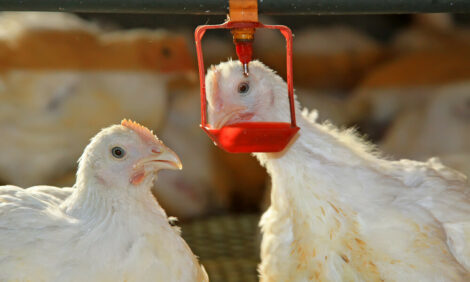



Weekly Outlook: Corn and Soybean Supply Prospects
US - Corn and soybean prices will continue to be influenced by a wide range of factors. For the next few weeks, the prospective size of the US harvest will be one of the dominating price factors, writes Darrel Good, Agricultural Economist at the University of Illinois.For corn, the USDA’s September forecast placed production potential at 12.955 billion bushels, 194 million larger than the August forecast. The larger forecast reflects a US yield forecast of 161.9 bushels, 2.4 bushels higher than the August forecast. Large increases in expected yields were registered for Illinois, Kentucky, Michigan, Missouri, and South Dakota. The US forecast yield is record large and expected production is only slightly smaller than the record crop of 2007.
In general, the market anticipates that the US average yield forecast will increase again in October, IF the majority of the crop escapes a killing frost before maturity. The western corn belt states may have the most potential for further yield increases. There is less consensus about the potential change in the corn production forecast in October. That report will incorporate “administrative” acreage information, mostly certified acreage data from the Farm Service Agency. Some believe that, like last year, the estimate of planted and harvested acreage will be reduced next month due to the late, wet spring in the eastern corn belt.
While the corn production forecast continues to increase, the USDA once again raised the forecast of expected consumption of US corn during the current marketing year. Feed and residual use is now projected at 5.35 billion bushels, 50 million larger than the September forecast and 100 million bushels larger than use projected for the 2008-09 marketing year. Projected use is well below the record of 6.157 billion bushels of five years ago, reflecting the impact of reduced livestock numbers and a sharp increase in feeding of distiller grain. The year over year increase in expected use is in the residual category, as handling losses increase with a larger crop. Still, another large increase in distiller’s grain production this year makes the forecast look generous.
US corn exports during the current marketing year are projected at 2.2 billion bushels, 100 million larger than projected last month and 350 million larger than exports for the year ended on August 31, 2009. The increase this month is based on prospects for a smaller crop and larger imports by Canada and a smaller crop and smaller exports by Argentina in 2010. The US share of world corn exports is expected to grow from 60 per cent last year to 65 per cent this year as corn production outside the US declines by about 3 per cent.
The larger production forecast was also partially offset by a 25 million bushels reduction in the expected size of September 1, 2009 stocks of old crop corn and by a 5 million bushel reduction in expected imports. Still, the larger crop is expected to result in lower prices than forecast last month. The midpoint of the USDA’s forecast of the 2009-10 average price received by producers is $3.35, $.15 lower than projected last month.
For soybeans, the US crop is now projected at a record 3.245 billion bushels, 46 million bushels larger than the August forecast. The US average yield is projected at 42.3 bushels, 0.6 bushels above the August forecast. Yield forecasts for the corn belt states were mostly unchanged from last month, with the exception of Indiana where a 2-bushel reduction was registered. Yield forecasts were increased for all of the plains states, Missouri, and several southeastern states. Another modest increase in the yield forecast is expected in October, but the production forecast will also be influenced by any changes in acreage estimates.
The USDA increased the forecast of consumption of US soybeans during the current marketing year by 36 million bushels. A larger crush is expected to result from larger soybean meal exports, which result from prospects of smaller exports from India. Larger soybean exports are expected to result from larger imports by China and from lower soybean prices. The midpoint of the USDA’s projection of the marketing year average price received by producers is $ 9.10, $.30 below the August projection.
In comparison to USDA’s farm price forecasts of $3.35 and $9.10 for corn and soybeans, respectively, the futures market currently points to an average price of about $3.00 for corn and $8.85 for soybeans.











